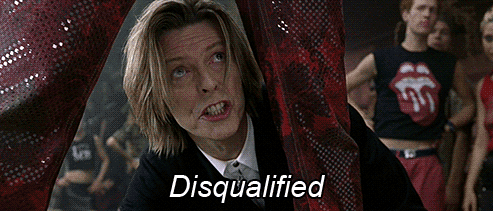Here’s the good news: nonprofit leadership opportunities are opening up. Cue the bad news: we swiped left on your LinkedIn profile and took our better-job-than-yours with us.
If you didn’t think LinkedIn was a big deal, you’d be wrong. In addition to boasting more than 3 billion users and being acquired by Microsoft for a paltry $26B earlier this year (so you can bet on seeing it integrated with your beloved MS office suite very soon), it offers some pretty amazing tools to recruiters and employers. Like it or not, recruiters, colleagues, clients and funders alike are looking at your LinkedIn profile to learn about you and validate your professional experience.
Of course you already knew that which is why you took the time to build the best profile you could (or so you thought), but when we looked at it, we weren’t so impressed. What gives?
You Botched the Setup
We know that this step is tedious and boring, but rushing through the set up just makes your profile look basic. Put the work in. Create an account and populate it with the essentials: where you’ve worked, what your title/role was, and what years you worked there. Add a blurb about who you are and highlight a few key accomplishments for each job you’ve had.
Bonus: Take a moment to carefully choose your headline. This isn’t the place to put techy jargon or aspirational titles you’ve made up yourself. It’s a place to underscore what you do. So if you wasted that space calling yourself a” Visionary Results-Driven Leader” or “Ruler of Nonprofit Land,” we just roll right on through.
Your Picture is Bad
Having a quality, professional profile image seems pretty hard to flop, yet we see so many failures. Be serious and steer clear of selfies with Snapchat doggy filters (yes, we’ve seen it before and yes, we swiped left without thought). Ask yourself, “does this look like a professional headshot (and does it reflect what I look like now)?” Don’t be that first date that shows up looking nothing like your photo. Choose a picture that comes across as friendly and approachable. Also, don’t use one that’s cropped from a random group photo, no matter how great you look in it.
You Seemed Super Desperate
Somewhere, someone told you to put “looking for the next great opportunity” or “Your Next CEO” in your headline. You need to find whoever that person is and disconnect, because that person is NOT your friend. We see that and scroll right on past. Because we think you’re looking for ANY job, not OUR job, and we’re not interested. If we contact you, it has to do with your skills and experience, not just because you really want a job.
Your Connection Count is Ridic
This isn’t a popularity contest. Connections are an actual thing and they matter. Consider this a freebie from us: DON’T CONNECT WITH PEOPLE YOU DON’T KNOW. Why? Oftentimes before we reach out to you, we try to figure out who our mutual contacts are and maybe reach out to them FIRST, before we even reach out to you. If they don’t know you and don’t know why you’re connected – either you’re unmemorable or connected for no reason – bad. If you don’t have any LinkedIn connections, that’s even worse because not only do you seemingly not understand the importance of the technology, you don’t even seem to think networking is important. And…we’re out.
You’re Bad At Math (Or You Think We Are)
Ok, so we weren’t the best at math, but even we know that you can’t have been president of your own consulting company for the last 7 years AND working at that job for the last two. Stop trying to hide employment gaps by calling yourself a “consultant” (we’re especially sensitive to this one). We can also tell something is amiss when you have jobs that omit months and only mention the years of employment. We’re going to call you out on it in an interview, so let’s just stick to the facts, ok?
You Don’t Respond to Messages
Did you know that LinkedIn tells on you when you are a bad responder? Maybe you genuinely missed our message. Ensure we can reach you once you’ve piqued our interest. Make sure you’ve turned on the ability to “receive emails from other LinkedIn members” and allow messages to go directly into your regular email inbox in case you don’t check LinkedIn on a daily basis. Don’t burn the bridge before it’s built. As with anyone that contacts you (besides spammers) please be professional and reply to our emails (we’re real people! And we like you). It’s ok if you tell us a big fat “I’m not interested at this time,” but at least we now know that you know basic email etiquette. Oh and don’t click “decline email” if you do want to stay in touch. LinkedIn prevents us from sending you a follow-up message if you “decline” our message.
BONUS: Help Us Help You
Did you know you can put out a private signal to recruiters that you’re open to job opportunities? Here’s how to do it discreetly: go to settings and under Privacy, change your “Job Seeking” status to “Let recruiters know you’re open to opportunities.” LinkedIn allows us to target professionals with this indicator turned on and they take steps to not show your current company. This said, remember it’s a small world and all it takes is a friend of a recruiter friend from another company to let your current employer know.
Think we’d be impressed by your LinkedIn profile to consider you for an open position? We’re hiring so apply today.
Want a coach to teach you how to sell yourself? We offer coaching and leadership development.
Need help weeding out the bad ones? We do executive searches.

